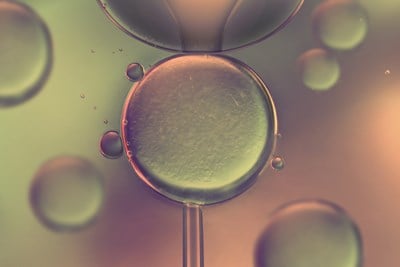Couples trying to become pregnant can experience problems with fertility for a number of reasons. Usually the first step taken when facing this issue is to attempt artificial insemination, since the procedure carries few risks and is relatively painless and inexpensive. Additionally, some people choose artificial insemination because they are using a sperm donor.
Regardless of your reasoning, the procedure will still follow the same basic steps. Here is what you can expect when undergoing the process of artificial insemination.
Preparing the Semen Sample
Whether your partner is providing the sample of semen or a vial of frozen donor semen is provided, the sample will need to be prepared before insemination. There are non-sperm elements in semen that can cause reactions in a woman’s body that will interfere with fertilization. Because of this, the sample of semen is washed beforehand. The washing process involves separating the highly active, normal sperm from the lower quality sperm and other elements of the semen. Using small, highly concentrated samples of healthy sperm will increase the likelihood of achieving pregnancy.
Monitoring for Ovulation
The timing of artificial insemination is crucial. Because of this, your doctor will use ovulation kits, ultrasounds, and blood tests to make sure you are ovulating at the time of insemination. Your doctor might also prescribe ovulation-inducing medications that will increase the number of eggs that your ovaries produce. This will increase the chance of success as well.
Determining the Perfect Timing
Your doctor will likely have a plan for the exact timing of your artificial insemination procedure. Most of the time, the procedure is performed a day or two after ovulation is detected.
During the Procedure
The insemination procedure takes about 15 to 20 minutes and is usually performed in a clinic or doctor’s office. Medications or pain relievers are not usually required since the procedure is painless—most women describe it as feeling similar to a Pap test.
You will lay on an exam table, place your legs into stirrups, and a speculum will be inserted into your vagina by a doctor or specially trained nurse. A vial containing the small sample of healthy sperm will be attached to the end of a long, thin, flexible tube called a catheter. The catheter is inserted into your vagina, through your cervical opening, and into your uterus where the sperm is pushed through the tube and placed inside of your uterus.
After the Procedure
You will be asked to lie on your back for 15 to 20 minutes after the procedure to give the sperm time to travel through your fallopian tubes. You may experience small cramping and light spotting for a few days. You should wait two weeks before taking an at-home pregnancy test after the procedure; testing sooner could result in a false negative or a false positive.
If you do not become pregnant after your first try at artificial insemination, your doctor will probably recommend trying at least three to six times before moving on to other more complicated and expensive methods.



